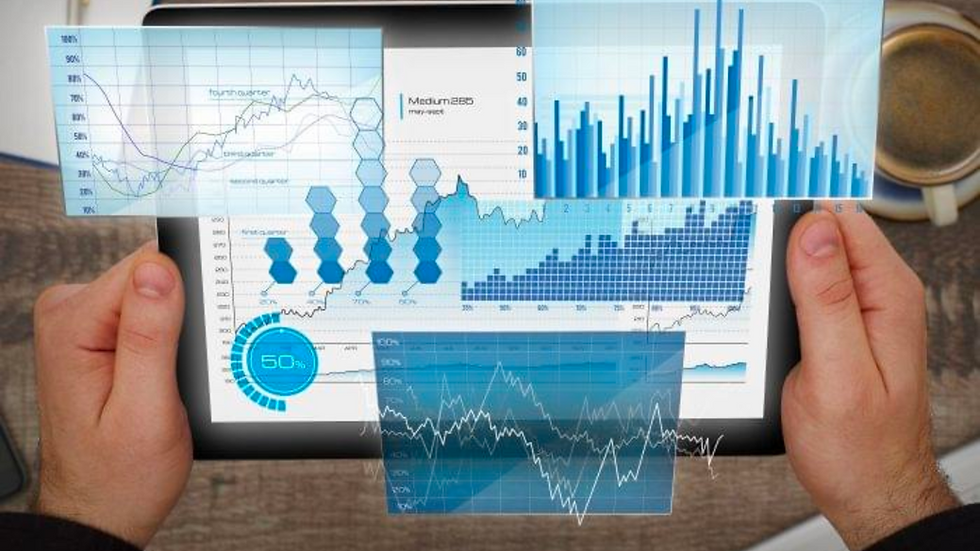What You Need to Know About Demand Forecasting
- Karl Aguilar
- Mar 29, 2023
- 3 min read

Businesses that sell a product or service often grapple with the question of demand for what they are offering. It is not just a matter of determining whether consumers/customers are seeking the product/service. It is also a question of whether these businesses can meet the increased demand or find ways to increase it, depending on the aforementioned reception.
Regardless of the nature of the demand the product/service is getting, it is critical for the business to address it appropriately and immediately. Otherwise, it can adversely affect the business financially and may also lead to a loss of trust among its customers.
For businesses to be able to act appropriately with the type of demand they are facing, it is important to do demand forecasting.
What is demand forecasting?
Demand forecasting is the process of using predictive analysis of historical data to estimate and predict customers’ future demand for a product or service. This allows decision-makers within the organization to make informed business decisions on matters such as inventory planning, warehousing, and even the holding of sales and other activities designed to address the demand more effectively.
Demand forecasting also allows businesses to better manage and maximize their cash flow and resources needed towards meeting this demand and/or, if necessary, improving on the demand towards a desired target.
Types of demand forecasting techniques
Demand forecasting can be carried out through different techniques, depending on the nature of the business and the goals it has set out to achieve. Below are some of the more common techniques in demand forecasting:
Macro-level – This looks at general economic conditions, external forces, and other broad factors that can disrupt commerce. These factors keep a business in the know around portfolio expansion opportunities, market research intel, and other shifts in the market.
Micro-level – This looks at demand by a specific industry, business, or customer segment.
Short-term – Forecast is limited to the next 12 months or less. It looks at demand for under a year of sales to inform the day-to-day operations and plans.
Long-term – Forecast is typically for a period of more than a year. This helps identify and plan for seasonality, annual patterns, production capacity, and expansion over a longer period of time. It also drives long-term business strategy.
Passive - This is carried out for stable businesses with conservative growth plans, particularly small and local businesses that have little to no growth ambitions in sight. They use Simple extrapolation of historical data with minimal assumption.
Active – This is done for scaling and diversifying businesses that have aggressive growth plans for marketing, product portfolio expansion, and consideration of competitors’ activities and external economic environment.
Doing demand forecasting
While demand forecasting may seem to be a complex process that involves gathering and interpreting multiple datasets and considering various variables, at its core, it is a straightforward process that consists of four key steps:
1. Set objectives
There should be a clear purpose for the business to do demand forecasting and metrics that are established beforehand such as the timeframe, target metrics, and market. The objectives must also satisfy the financial planners, product marketing, logistics, and operations working on the product/service.
2. Collect and record data
Integrating all of the data from all sales channels can provide a cohesive view of actual product demand and insight into sales forecasts. This data should not only include the time and date of all orders, the SKU(s) included in each order, and the sales channel it originated from, but also the average order value of the customer, return and stockout rates, SKU velocity (the frequency an SKU is picked on a given period), and the inventory turnover rate.
Outside of the sales data, it is also critical to pull in other pieces of data, like market conditions.
3. Measure and analyze data
There is a need for a repeatable data analysis process in performing this step. This entails making a comparison between the predicted and the actual sales to be able to adapt accordingly or make the necessary adjustments for the next forecast.
And as a business grows, there might also arise a need to start tracking additional pieces of information such as obsolete stock, frequency of stockouts, and other order details need to make the necessary improvements.
4. Budget accordingly
With a forecast now in place thanks to the data, budgets can now be allocated accordingly to specific aspects of the sales operations based on growth goals. A more balanced and more efficiently-allocated budget enables businesses to carry out their growth plans more effectively in different aspects such as marketing spend, future headcount, production and inventory needs, and new products.
As customer expectations and preferences change constantly over time at a pace much faster than before, it is critical that businesses are able to meet, if not anticipate, such changing demands in a timely and accurate manner. When done right, demand forecasting can help businesses get ahead and ensure a more sustainable growth in the long term.







Comments